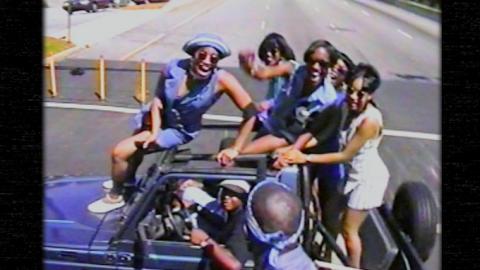Hulu’s ‘Freaknik’ Details the History of Atlanta’s Infamous Parties

In 1983, a group of Black college students in Atlanta organized a small cookout during spring break. It was named “Freaknic,” a combination of “picnic” and a reference to the Chic song “Le Freak.” It became a tradition and in the 1990s, it exploded into a citywide gathering for Black students around the country. Freaknik’s rise, impact and fall are documented in Freaknik: The Wildest Party Never Told.
Freaknik started with humble roots, meant as an event that Black students at Atlanta colleges could attend if they weren’t leaving town for spring break. Its founders talk about those first few years with great reverence and also discuss why Atlanta was – and still is -- such an important place for Black culture. It was one of the only cities in the U.S., at the time, with a high number of successful and influential Black people and was regarded as a “Black Mecca.”

As the event grew year after year, it became more notorious through word of mouth. Seeing its rise in popularity is one of the more interesting aspects of the film because it’s mentioned early on that many people brought their camcorders to Atlanta – hence, there’s a lot of old footage that shows the differences between each Freaknik event from one year to the next.
The event went through big changes in the early ‘90s. As its notoriety increased, it became a hub for newer hip-hop artists to spread their music through demo tapes. Around the same time, Uncle Luke from 2 Live Crew turned his attention to Freaknik, and it attracted more people who were attending mainly because of the increasing sexuality that was happening there. The interesting part about this section of the film is that even though the event started as a means to give Black college students a space to feel free and confident in who they are, that message eventually became muddled amid the growing sexualization and monetization happening there. It also started attracting people who were well past college age and just wanted to party for a couple of days.

The narrative gets shaky when Freaknik 1996 is discussed It’s said that after Atlanta won the bid to host the 1996 Summer Olympics, city officials started to put pressure on Freaknik to rein itself in and maintain the city’s reputation. At first, those giving testimonials make it sound as though the Olympic Games and Freaknik were in direct competition, despite being months apart.
Historical footage shows that Atlanta police did have an increased presence, but a lot of the people attending complained that the event didn’t feel fun or safe anymore because of the increase in harassment and sexual assault. On top of that, many chose to just spend their spring breaks in other popular destinations like Daytona Beach. It’s hard to follow what led to Freaknik’s demise, but one thing is certain: It was now a far cry from what it used to be.

Freaknik didn’t survive the end of the ‘90s, and many debate if it was truly something that advanced the cultural mainstream, or just a party that spiraled out of control. Despite all the historical footage and Freaknik’s reputation for being debaucherous, this documentary doesn’t tell a story that is as outrageous as its marketing makes it out to be.
It’s an interesting story in that it’s a series of events that would be largely unknown to those living outside the Atlanta area in the ‘90s, but there’s not a lot of entertainment besides. Much like those who attended Freaknik, it seems that the producers of this documentary are being also fueled by nostalgia.
Author Bio:
Ulises Duenas is a senior writer and film critic at Highbrow Magazine.
For Highbrow Magazine































































































































































































































































































































